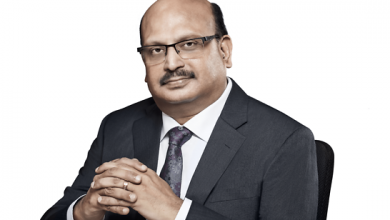Telematics is a paradigm shift for insurers and consumers alike
Maneesh Prasad, Editor, Smart Automotive & CEO of Telematics Wire explored the horizon of insurance telematics in discussion with Nino, where he gave interesting insights.

Q: Congratulations on reaching 5 million connected cars under your Octo umbrella. What numbers do you expect in the next 3 to 4 years?
A: Thank you. We are excited not only about our growth of connected cars, but our continued global expansion of clients and partners. Over the next 3 to 4 years Octo will continue to dominate the insurance telematics market, expanding our products beyond automotive, to serve insurers and their policyholders in other areas, such as home, health, and mobility. Adoption will align with awareness, so we’ll continue to educate the market on the benefits of telematics and its application well beyond simply usage-based insurance (UBI).
Q: Amongst various products in insurance telematics (like PPU, PHYD and others), which one has contributed most in growth of numbers for Octo and why?
A: Octo’s solutions support all the various types of telematics-driven insurance, so we’ve seen growth in pay-as-you-drive, pay-per-use, and pay-how-you-drive insurance. We’ve also seen a surprising rise in the use of telematics for livery insurance (think Uber and Lyft) as these policies are a relatively new market for insurers. In states with strict rating requirements, like California, which only allow miles driven as a telematics rating factor, we see the majority of growthin pay-as-you-drive programs whereas in other markets most of our insurance partners offer pay-how-you-drive programs. With our deep understanding of driver behavior, PHYD programs add far more value – and a far greater improvement in combined ratio – for personal, and increasingly, commercial lines. While not an insurance product per say, a substantive amount of Octo’s growth comes with the introduction of Octo’s crash and claims capabilities to the North America market. According to the Insurance Information Institute, US auto insurance total loss costs have skyrocketed by 10x the rate of inflation. The benefits of telematics for insurers are fully realized when applied to not only risk and pricing but also crash and claims management.
Q: Can you suggest the factors which will hasten the growth of insurance telematics in general in its existing market?
A: Towers-Watson indicates that usagebased insurance policies only account for around 8% of all auto insurance
policies in the United States today. This likely stems from an overall lack of consumer awareness of telematics (one study suggesting only 25% of consumers being familiar with usage-based insurance) and carriers’ strategic emphasis on retaining their best customers at stable rates. This focus leads to many policyholders never hearing about their insurer’s telematics program out of insurers’ worry that it will cannibalize their own book of business. This is in sharp contrast to the approximately 60% of consumers who would opt-into a usage-based insurance policy were they offered one. While adoption is low, it is growing as smaller insurers begin offering UBI programs. Critically, those policyholders using telematics – those with traditionally high churn rates – tend to have a much higher customer satisfaction score (between 54 and 72 points higher), than those who don’t, leading to improved retention rates. Given the immense cost pressure associated with auto claims, we expect the next big wave of growth in insurance telematics to come from telematicsdriven crash and claims. Octo leverages proprietary algorithms fine-tuned using crash dynamics data from 397,000 crashes to drive its advanced crash and claims capabilities. Insurance telematics will, in the near future, reach a tipping point where insurers who don’t integrate telematics capabilities will fail from negative selection bias in their book of business, higher claims costs, and an exodus of profitable policyholders.
Q: Some people say that the connected car ecosystem is precursor to insurance telematics, what doyou have to say on this? (Particularly for geographies that have not seen much action in this segment so far)
A: I would agree that connected cars help consumers get used to technologies that gather data and information about both the car an their driving performance. As consumers become more connected – through their vehicles, their phones, and their homes – they become more open to sharing this data with third parties in exchange for value. Insurance telematics offers policyholders many benefits beyond just good driving discounts. There are many value added services for policyholders such as roadside assistance, accurate collision liability, claims settlement acceleration, vehicle health, as well as weather, traffic and road conditions. The already connected consumer will be faster to adopt telematics, with a keen appreciation of the benefits.
For markets where consumers are less connected, insurers and auto OEMs need to make clear the value consumers are geting for the data they share. If real value is offered, and privacy concerns assuaged, consumers will generally adopt a new technology. There will always be a small group whose privacy concerns preclude them from adopting new technology, but most people can be won over with a fair exchange of value and greater safety.
Q: As they say, data is new oil, is Octo monetizing the data. Do you see auto manufacturers playing a role in this segment for having access to this data?
A: The data we gather is used to provide insurers and drivers with the information they agreed to collect as part of an insurer’s telematics program. With privacy concerns still central in many consumers’ minds, we do not share this data outside of the insurer-insured relationship and ownership agreement. Our relationships with OEMs is all about
helping them monetize their connected car investment. Octo automotive partners can monetize the data their connected cars produce, transforming it into the insights our 60+ insurance partners value most. We have a robust ecosystem into which auto OEMs can sell telematics data. Importantly, they can monetizethis data without building relationships and integrations with individual insurers. This helps them monetize their data while cu?ng out a major structural cost, increasing profits for the OEMs and reducing the cost of purchasing this data for our insurance partners.
Q: With your device in vehicle and access to whole gamut of data, doyour insurance telematics players also provide services related to preventivemaintenance or remote diagnostics? (Assuming they have access toomprehensive diagnostic trouble codefrom the manufacturer)
A: Absolutely. Several of our solutionscollect data directly from the OBDII port, providing both policyholders andinsurers with vehicle diagnostic data.Policyholders – from both personal linesand commercial lines – use this data to understand any vehicle issues as soon as they occur. We’ve built functionality on top of this to provide preventive and scheduled maintenance reminders and repair management functionality for fleets. Insurers are also using this data with use cases ranging from fraud prevention to recall notifications.
Q: What would be your advice to players in emerging economies, trying to get into insurance telematics?
A: Telematics is a paradigm shift forn insurers and consumers alike. The largest and most innovative insurance companies globally are adopting the technology to price risk more accurately, process claims faster, and engage with their customers. Consumers are seeking telematics primarily for fair and transparent pricing. Insurance companies in emerging economies, unburdened by legacy systems, complicated processes, and policyholder expectations, are at a unique advantage. They can pivot quickly to this new technology and gain early advantage in their market. In emerging markets where auto insurance is still arelatively young market, insurers can use telematics to attract profitable customers as well as those that have avoided insurance due to lack of transparent and fair pricing. Now is the right time for insurers in emerging markets to build expertise in telematics.





